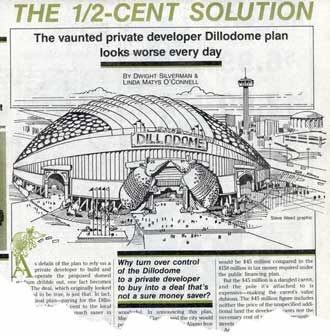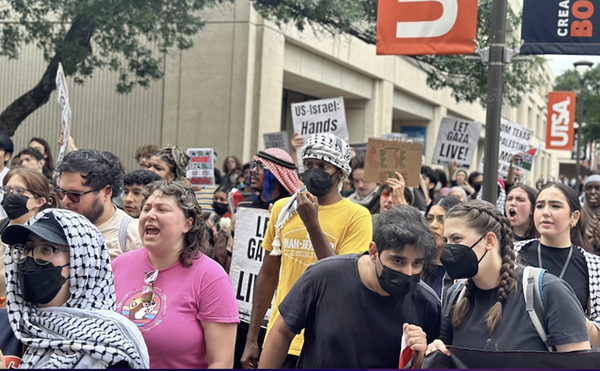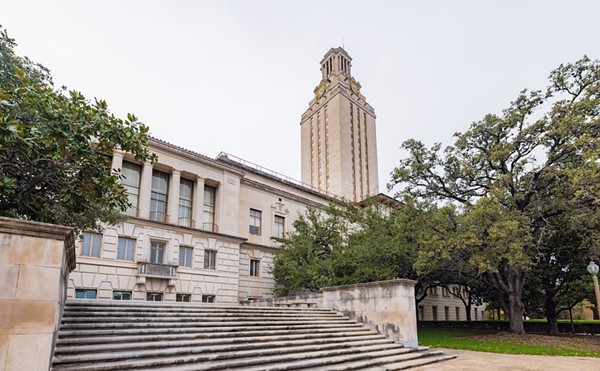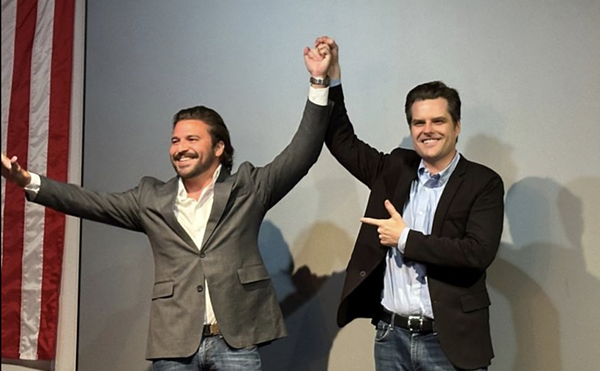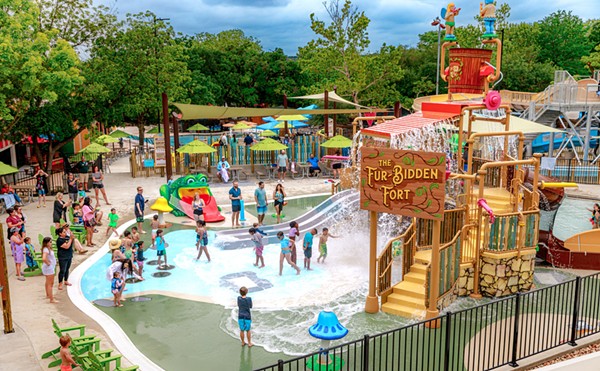After last year's flirtation with the Saints, the Alamodome readjusts to life without the NFL
September 14 is a very busy day for Michael Abington. The director of the Alamodome is preparing for a big-ticket college-football matchup between Texas A&M and Army on Saturday, playing phone tag with promoters for a projected fight featuring ex-heavyweight champion Evander Holyfield, and troubleshooting a number of one-off events coming to the Dome. His phone never stops ringing.
Now that the Saints’ brief, tragedy-induced flirtation with San Antonio has ended, and with the Cowboys a year away from relocating their training from Oxnard, California, to San Antonio, this marks the only year other than 2004 in which the Alamodome hasn’t boasted some kind of major-league sports presence. And this year might be even more painful, because the Dome’s staff has now tasted NFL glory, and seen it taken away.
San Antonio won national raves for its large crowds and corporate backing of the Saints last season, but it remains anyone’s guess — including Abington’s — whether the city is even slightly closer to acquiring an NFL franchise than it was when local voters approved a five-year, half-cent, sales-tax increase for the stadium 17 years ago. During that time, the facility has served a useful purpose as a center for special events: the Alamo Bowl, high-school championship games, college tournaments, business conventions, and even high-school graduations.
But with modern stadiums becoming outdated within a decade and obsolete soon afterward, it’s easy to see the Alamodome as a $186-million white elephant, the city’s ultimate sports boondoggle.
Abington, a former director of the Silverdome in Pontiac, Michigan, says that anyone who perceives the Alamodome as a dormant facility is simply uninformed. “Now and then, I’ll hear somebody say, ‘the Dome is empty, the Dome is dark,’” Abington says. “Well, that person hasn’t called for dates, because if you want a `weekend` date between November and April, I can’t help you. We’re virtually full. So the Dome is quite busy.”
While the Alamodome is hardly inactive, it remains a far cry from the high expectations that greeted its May 1993 grand opening. At that time, former mayor Henry Cisneros declared the stadium’s unveiling “a new chapter in San Antonio’s life.” Within six months of the grand opening, the Alamodome hosted a concert by Paul McCartney, a monumental championship fight between Julio César Chávez and Pernell Whitaker, and Spurs basketball games. These days, its big tenants tend to be the Builders Showcase Expo and the Cheer Power Spook Nite Championship. Without a doubt, the Alamodome serves a greater function than Houston’s all-but-neglected Astrodome, but at least the Astrodome has 35 years of major-league sports in its history.
The Alamodome operates on an annual budget of approximately $8 million, and Abington estimates the facillty will record a deficit somewhere between $1.5 million and $2 million this year. He says to focus on that deficit, however, misses the bigger point: that the Alamodome is a “loss leader” that pays for itself by attracting visitors to San Antonio and generating dollars for local businesses.
“The Convention Center is one of the prides and landmarks of San Antonio,” he says. “You know what its deficit is? $10-12 million. `The Army-A&M game` is going to bring in 35,000 to 40,000 throughout town to come in and spend their money at our hotels, and our restaurants, and our souvenir shops. To the tune of probably $10 million in one day.”
While most sports fans view the Dome as a largely unused football stadium, Abington describes it as a “hospitality pod” in San Antonio’s “economic cycle of visitation” — a convention center with artificial turf.
“We’re real estate for rent,” he says. “We do more commercial events than the Convention Center, and they do many more conventions and meetings than we do. But the fundamental operation and direction is the same. We’re both here to generate economic activity for this city in the form of visitation.”
The city remains in a touchy situation with the Alamodome, however, because with each passing year the Dome slips farther from the state-of-the-art it represented in 1993; bringing it up to contemporary NFL market standards would cost, in Abington’s estimation, between $75 million and $125 million.
“If `an NFL franchise` should come about over the years, I think there will be some decisions to make,” Abington says. “Are we going to be able to negotiate with a franchise with a plan to renovate the Alamodome, or does that owner agree to play here for a certain period of time with a commitment for a new stadium down the road? I don’t know.”
For a couple of months last fall, local football addicts thought the city’s moment was at hand. Saints owner Tom Benson made little secret of his desire for a new stadium to replace New Orleans’ Superdome (Abington says Benson essentially told him that directly), and his affection for the city of San Antonio. With New Orleans’ economic future in doubt after Katrina, Benson’s uncertainty about the team’s future in Louisiana was understandable, but in light of the anguish experienced by the Gulf Coast Region, it was bound to anger people who already felt abandoned by government at every institutional level.
These days, Benson is gushing about New Orleans’s support for his team, and giving no indication that a move to San Antonio is likely.
Abington, a Louisiana native whose sister lives in Baton Rouge, offers nothing but praise for Benson and the team’s organization. Meanwhile, the Alamodome opened 14 new luxury suites for the Army-A&M game (bringing its total to 52), and Abington devotes much of his attention to keeping the facility relevant, whether or not the NFL comes calling.
“The structural life of this building may be another 20 years,” he says. “Well, we’re less concerned with the structural life than the marketable life. It’s of paramount importance that we maintain this facility, keep it up to date, keep it marketable. That’s how we’re going to do the Army-A&M game, the Final Four, the Alamo Bowl. That’s how we maintain a posture in the sports and entertainment world.”

